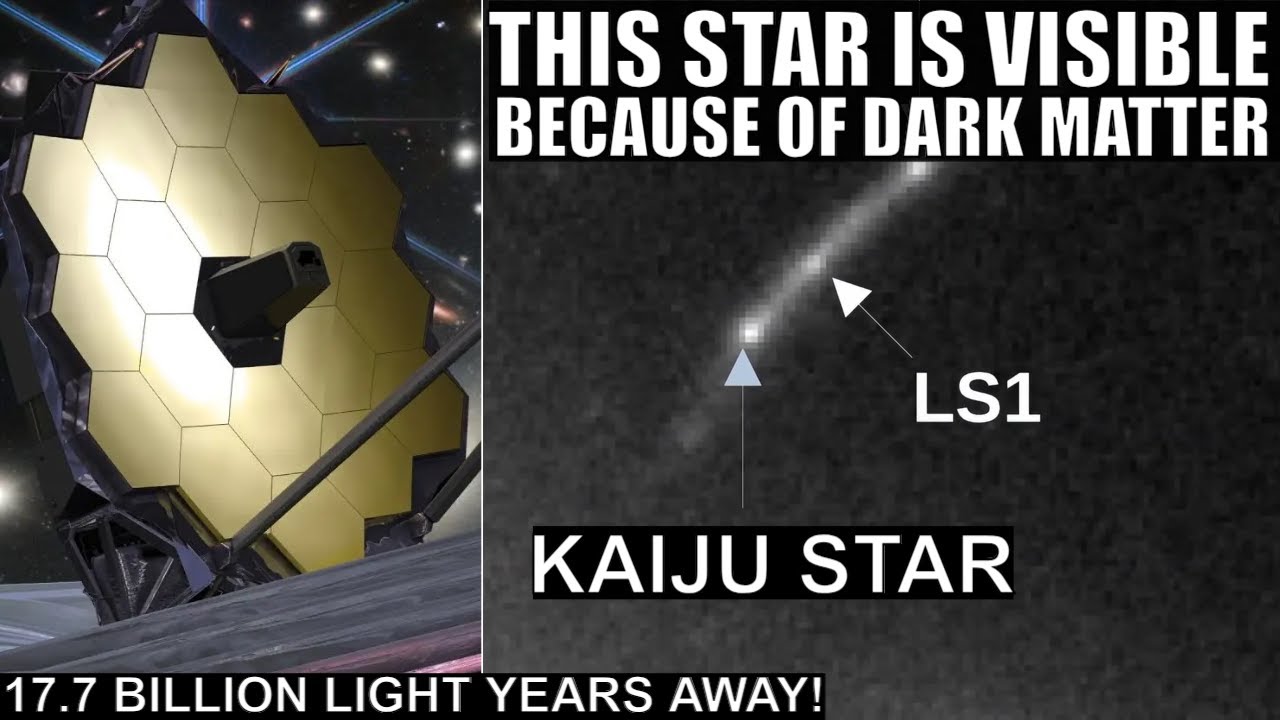In a paper posted at arXiv on 2023-07-19, “JWST’s PEARLS: Mothra, a new kaiju star at z=2.091 extremely magnified by MACS0416, and implications for dark matter models” (full text at link), thirty-one authors report discovery of a binary star with two supergiant components, one with a luminosity of 50,000 Suns and temperature of 5000° K, and the other with luminosity 125,000 Suns at 14,000° K. The stars have a redshift (z) of 2.091 (determined by observing the shift of spectral lines of known elements in their photospheres), which implies a distance around 17.7 light years and look-back time of approximately 11 billion years.
First, let’s unpack acronyms and jargon in the title.
- JWST: James Webb Space Telescope
- PEARLS: “Prime Extragalactic Areas for Reionization and Lensing Science”, a JWST observing programme
- Mothra: Japanese movie monster, first appeared in the eponymous 1961 film
- kaiju: Japanese giant movie monster (generic term)
- MACS0416: The galaxy cluster MACS J0416.1-2403 in the constellation Eridanus at redshift z=0.397 and mass 160 trillion times than of the Sun: note that this is much closer than the distant object it is lensing
The fact that individual stars, notwithstanding their enormous brightness, are visible at all at such a distance can be explained only by magnification by a gravitational lens along the line of sight from Earth to the distant objects: from observations, the lens is estimated to have a magnification greater than 4000 times. But there is no visible object along the line of sight that could explain such extreme lensing. The paper discusses alternative explanations and concludes a “millilens” composed of a clump of dark matter with between 10^4 and 10^6 solar masses is the most likely cause of the observed magnification. Here is the abstract.
We report the discovery of Mothra, an extremely magnified monster star, likely a binary system of two supergiant stars, in one of the strongly lensed galaxies behind the galaxy cluster MACS0416. The star is in a galaxy with spectroscopic redshift z=2.091 in a portion of the galaxy that is parsecs away from the cluster caustic. The binary star is observed only on the side of the critical curve with negative parity but has been detectable for at least eight years, implying the presence of a small lensing perturber.
Microlenses alone cannot explain the earlier observations of this object made with the Hubble Space Telescope. A larger perturber with a mass of at least 10^4{\rm M}_\odot offers a more satisfactory explanation. Based on the lack of perturbation on other nearby sources in the same arc, the maximum mass of the perturber is {\rm M}<2.5\times 10^6{\rm M}_\odot, making it the smallest substructure constrained by lensing above redshift 0.3. The existence of this millilens is fully consistent with the expectations from the standard cold dark matter model. On the other hand, the existence of such small substructure in a cluster environment has implications for other dark matter models. In particular, warm dark matter models with particle masses below 8.7 keV are excluded by our observations. Similarly, axion dark matter models are consistent with the observations only if the axion mass is in the range 0.5\times 10^{−22}{\rm eV}<m_a<5\times 10^{−22}eV.
This is, thus, an entirely new kind of observation which is difficult to explain by any mechanism other than gravitational lensing by dark matter and consistent with the prediction by the cold dark matter model of the existence of intermediate mass (“millilens”) clumps of dark matter in galaxy clusters.
